#La Scala ballet school
Text
In the July edition of Dancing Times magazine...
In July's Dancing Times magazine I talk about La Scala Ballet’s exciting new principal Alice Mariani, and Emanuela Montanari's farewell performance.
Dancing Times cover July 2022 photo by Francette Levieux
In the July edition of Dancing Times magazine, my Danza in Italia column talks about La Scala Ballet’s exciting new dancer Alice Mariani as she comes to the end of her first season with the company. I write: “Now with Sylvia, in a version choreographed by Legris for the Vienna State Ballet, she has once again proved herself as one of the…

View On WordPress
#Alice Mariani#Dancing Times#La Scala#Roland Petit#Royal Ballet School#Rudolf Nureyev#Vienna State Ballet
0 notes
Text

La Scala’s Ballet School, Milan, Italy, Photo by Alfred Eisenstaedt, 1934
251 notes
·
View notes
Note
alexia simply not understanding that all ballet dancers go away for summer intensives every summer and getting so upset when bambi asks if she can audition to like paris opera or la scala or some other big european ballet companies and getting in and being so so desperate to go away for the summer
Thank you for giving me the opportunity to waffle about Bambi's career in Alexia's Version:
Bambi goes to a ballet school near Alexia's house until she's about ten when her dance teacher calls Alexia in and really apologetically tells her that they can't support Bambi's development anymore. Alexia's furious and almost starts yelling before she's told that Bambi's doing far too well for her age and they're recommending she continues her schooling with Ballet de Catalunya.
So Bambi moves to their ballet school at age ten and really excels. She starts going to summer intensives at twelve but they're all Spain based so it isn't too far to travel.
When she hits fourteen, she's given a recommendation to go to the summer intensive at La Scala and Alexia really freaks out because La Scala is in Italy and she doesn't want Bambi to go. She lets her go though and Alexia thinks that's it only for Bambi to get another recommendation to go to Paris Opera because Bambi is very much a classical dancer.
Alexia freaks out a bit more but again lets her go after Bambi begs.
At sixteen Bambi either joins Ballet de Barcelona or Ballet de Catalunya (leaning more towards the second one) as an apprentice before rising the ranks.
I haven't quite decided whether or not she stays there or if she goes off to other companies when she's older.
56 notes
·
View notes
Text

Lesson at La Scala's Ballet School, Milan, Italy (1934), photographed by Alfred Eisenstaedt
20 notes
·
View notes
Photo

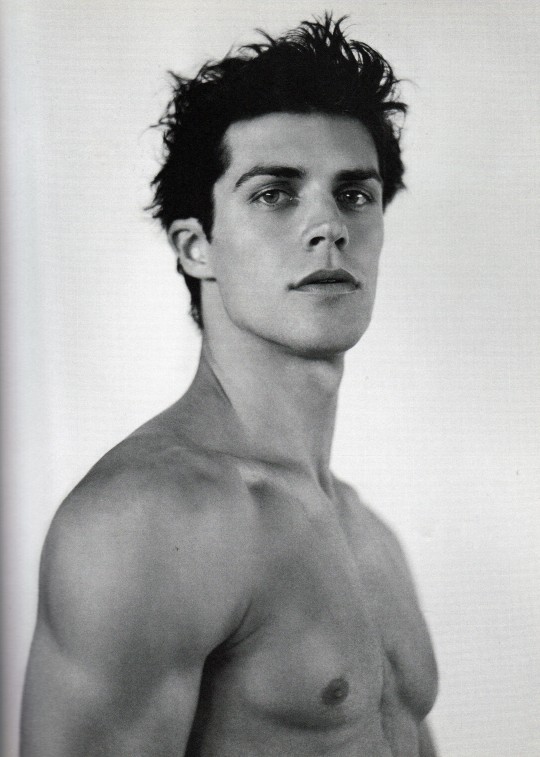
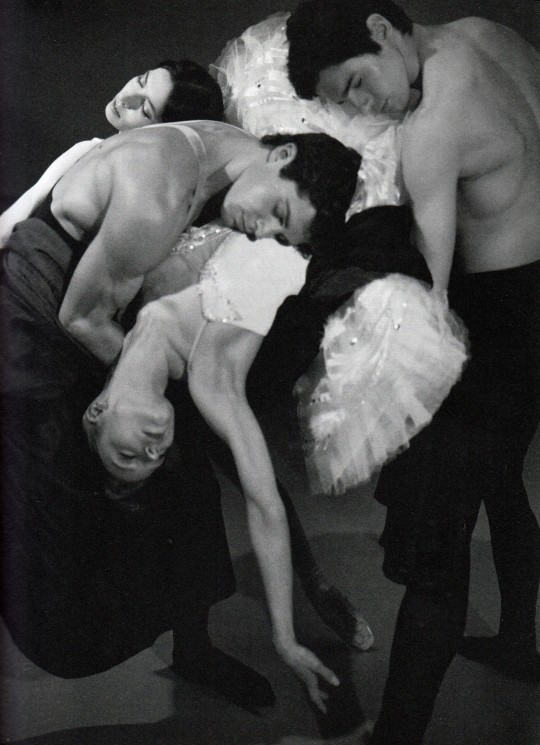

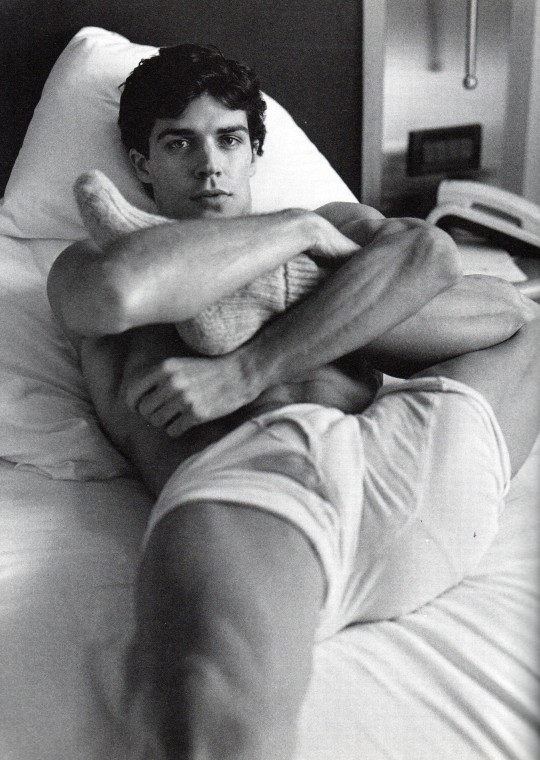

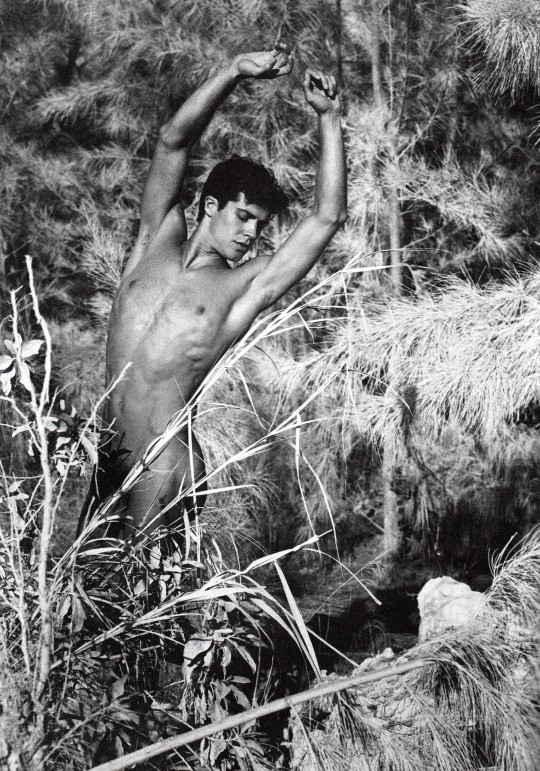
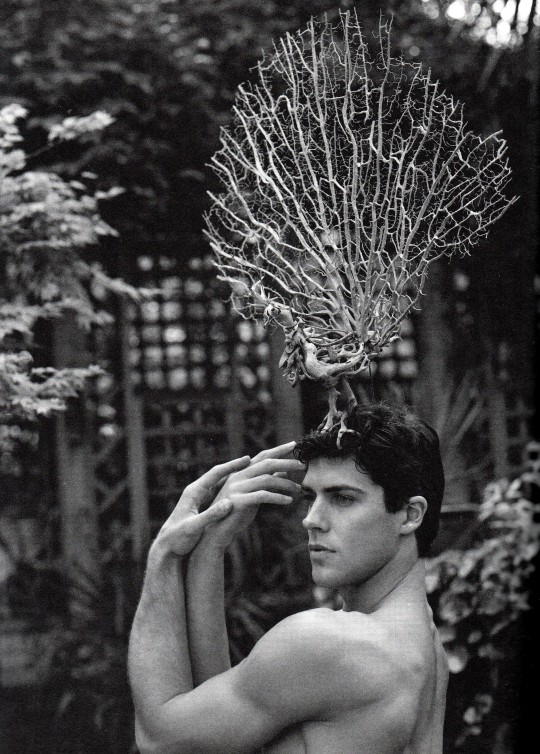
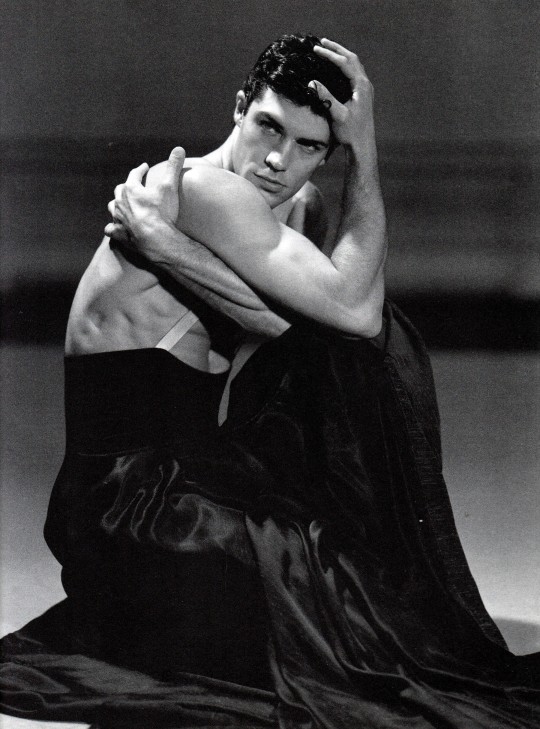
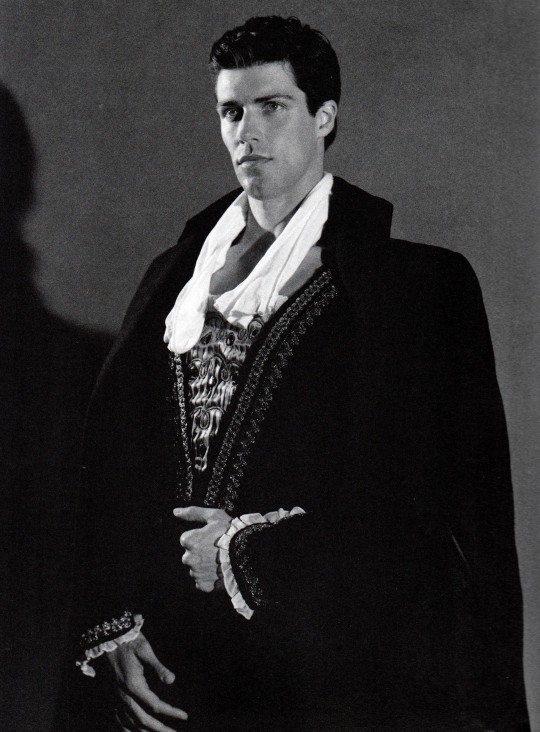
Roberto Bolle An Athlete in Tights
by Bruce Weber
teNeues, Kempen 2009, 192 pages, 127 duotone and 24 color illustrations,23,5 x 30 cm, ISBN 978-3-8327-9196-4, Out of Print book
euro 210,00
email if you want to buy [email protected]
“Roberto Bolle: An Athlete In Tights” celebrates Bruce’s three-year collaboration with the Italian ballet sensation.
Roberto Bolle was born in Casale Monferrato, Italy. At a young age, he entered the Theatre La Scala ballet school. Rudolf Nureyev was the first to notice his talent and chose Roberto to interpret Tadzio in the ballet “Death in Venice.” In 1996, at the end of a Romeo and Juliet performance and just 2 years after he joined the Theatre Company, Roberto was promoted to principal by Elisabetta Terabust who was at that time the Director of the Corp de Ballet. Since then he has starred in many contemporary and classical ballets and he has been invited as a guest artist to work with the most prestigious ballet companies in the world. In recent years, his international acclaim has only grown. Roberto is now the first male Italian ballet dancer to join the American Ballet Theatre as a principal.
In this monograph, Bruce Weber captures the spectacular convergence of artistry and physicality in this dance phenomenon, the grace and beauty that have captivated Roberto’s audiences around the world.
The book is largely pictorial in nature, with original photography and writing by Bruce Weber, original writing by Roberto Bolle, text by D.H. Lawrence, Pier Paolo Pasolini, and illustrations by Paul Cadmus and Jeremiah Goodman.
orders to: [email protected]
twitter: @fashionbooksmi
flickr: fashionbooksmilano
instagram: fashionbooksmilano
tumblr: fashionbooksmilano
10/02/23
#Bruce Weber#Roberto Bolle#athlete in tights#photography books#rare books#ballet dancer#dance phenomenon#fashionbooksmilano
76 notes
·
View notes
Photo
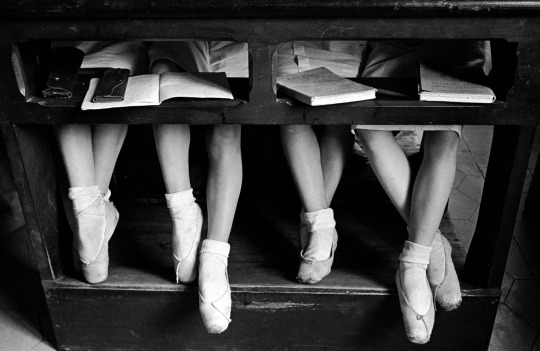
Alfred Eisenstaedt. Young ballerina's toe shoes at La Scala Theatre Ballet School in Milan, Italy, 1934.
96 notes
·
View notes
Note
When did you lose your virginity?
During a school trip to Berlin in April 2013. The night Margaret Thatcher died I repeatedly lost my virginity to a pupil of La Scala Ballet School.
4 notes
·
View notes
Text
500: Fernando Montaño: Colombia's Billy Elliot
It's Episode 500 of the Colombia Calling podcast!
Celebrate with us as we chat to Colombia's most famous dancer, Fernando Montaño.
Fernando Montaño was born in Buenaventura on the Pacific coast of Colombia and at the age of 14 won a scholarship to the National Ballet School of Cuba where he won several prizes at the International Ballet Contest in Havana, Cuba, and then joined the Cuban National Ballet. He also trained at La Scala and Teatro Nuovo di Torino, Italy where he was spotted by the Director of the English Ballet School and invited to the UK to audition, following which he joined the Royal Ballet in 2006 where he was mentored by Carlos Acosta.
We discuss his life as an artist - dancing, painting, designing - and his work supporting the charity, Children Change Colombia, the question of identity and being from Colombia's pacific coast.
Join us to hear and experience Fernando's unique energy, his reflections on life and opportunities and how he wishes to be remembered.
The Colombia News Brief is reported by journalist Emily Hart.
Support the Colombia Calling podcast: https://www.patreon.com/colombiacalling
Check out this episode!
0 notes
Text
"May we please discuss tours a la seconde for a moment?," jazz dance teacher Bill Waldinger observed a ballet teacher gripe on a forum.
"I tend not to spend a lot of time at (multigenre dance comps), but I have done a LOT of observing this season. Tours a la seconde are traditionally a male virtuoso skill performed in a variation."
"The correct execution includes a turned-out preparation, a fully engaged leg turned out from the hip at 90 degrees and arms that remain in the second position during the execution of the turns which are usually performed consecutively, with the leg turned out in retire on the pirouette that follows. What I am seeing is a gross abomination of said skill."
What she didn't know that Anna Heinel - A GERMAN BALLERINA - invented the sequence of grandes pirouettes a la secondes, or GPALS, with releves in between, a staple initially in male parts of grand pas de deux codas and then jazz, lyrical routines. A rival - and then wife of - Gaetano Vestris, she did those to initially outdo him.
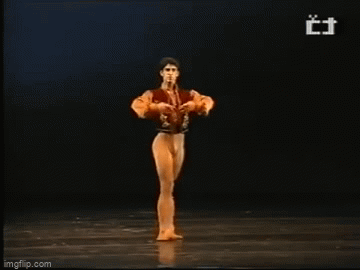
But it was the then-20-year-old Enrico Cecchetti who bought it to the mainstream in 1885 in the La Scala performance of Excelsior. After slipping on wax, falling on wires, and hearing a prop crash to the floor, he salvaged the performance by doing 32 GPALS with releves in between. He even - surprise - taught that sequence to his danseuses.
But since Maestro Cecchetti's death, far fewer females had executed that sequence.
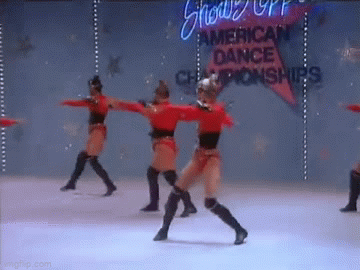
So how did the number of danseuses doing GPALS with releves in between rebound? One of the earliest instances of them doing those moves - especially in non-ballet contexts - was a 1990 jazz routine by Dolores Warner Performing Arts Studio (Tucker, GA) titled "Future."
Slowly but gradually, more and more dance studios adapted the sequence for their female students. So did collegiate and secondary school dance teams, seeking to win titles at competitions. As early as 1997, it made its way into lyrical routines, though fouettes en torunant were dominant advanced turn sequences of the day.
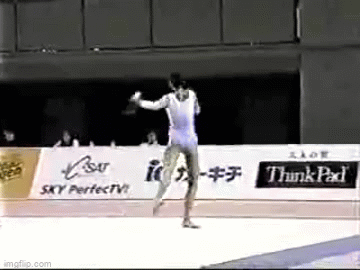
Around that time, the International Gymnastics Federation listed fouettes with legs in horizontal, their jargon for GPALS with releves in between, in the 1997-2000 RG Code of Points. More and more athletes of the type incorporated them in their routines over time.
As dial-up started becoming obsolete and Web video sites like YouTube were founded, netizens of independent dance studios look beyond dance team videos and ballet excerpts and watched rhythmic gymnastics routines to see which tricks would work in their routines to raise their scores.
"Part of the disagreement seems to stem from the fact that teachers working in the pre-professional world, especially pre-professional ballet, want competition dance to work the way they work and do what they do," Waldinger explained.

"But much (not all) of competition dance is simply DIFFERENT. Not worse, not better…different. I see very little choreography in competition dance that would be 'at home' on the Broadway Stage or in a concert dance company. And similarly, a (classic jazz piece) would not do well at a competition due to its lack of technical difficulty despite its incredibly challenging artistic demands."
"And let me state that when competition dancers come to Joffrey and join the pre-professional programs, they typically do very well. VERY WELL. There is an adjustment, for sure, but their discipline and training serve them well."
However, Waldinger has some reservations on the overuse of GPALS with releves in between. "I hate it when turns are used as a vulgar display of technical prowess," he wrote, "When these turns are part of a 19th century men’s variation, that’s pretty much what they are… a display."

"But in more modern choreography, if you are going to use them, in my opinion, they need to have an artistic purpose. An if you can find a way to make them work within the context of jazz - great! Jack Cole made East Indian dance work within the context of jazz. This is how art grows. And with respect to ladies performing the step…why not? We no longer tell girls they can’t play football, should we be telling them they can’t/shouldn’t execute a ballet step?"
"With respect to performing/competing with one shoe… It is not an artistic choice that I would ever make. But I recently was made aware of a piece that was choreographed for dancers wearing one pointe shoe and one stiletto heal. Another choice I would have never made."

Bob Boross, himself a protege of Matt Mattox, also has some gripes on those and GPALS with releves in between. "I can only speak ofpast days when jazz dance was presented in a way that did not honor the tradition, nor honor much creativity in creation," he addressed the Dance Teacher Summit in 2018.
"The prime reason for the choreography was to display the ability of
the dancer, often resulting in a surfeit of tricks and of course the ridiculous inclusion of (GPALS with releves in between) in a jazz dance routine. I would imagine that it hasn’t gotten much better in recent years... but competition jazz dance has not done much to improve the quality of the form or its knowledgeability in its audience."
Boross suggested balancing the GPALS with releves in between with elements of classic jazz. He includes "finding the true range of emotions inherent in jazz music and not focusing solely on hot expressions;" executing "movements in (demi-plie and fondu), with a forward bend in the torso;" manipulating a spectrum of dynamics in movement execution; discovering "cool" expressions in movement; and seeking out "new movements in traditional patterns that will show creativity rather than use of established audience-pleasers" that complement them well.
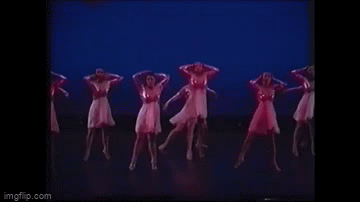
"Drop the switch split and come up with a different,similarly exciting leap...and a triple pirouette on a straight knee is not the only way to
turn in a jazz dance – come up with something original."
"A la seconde turns will not book you a job," advised Courtney Ortiz, dance teacher and host of Making the Impact: a Dance Competition Podcast, "but FOUETTÉ TURNS will! In this biz you NEVER know what will be thrown at you in an audition and you always have to be prepared for anything."
"It’s not my place to tell the competition schools what and how to do what they do," concluded Waldinger, "It is my job to bring what I do to them. And perhaps it will influence what they do and perhaps it won’t.
"And perhaps one day there will be a new grand pirouette a la seconde that is part of the vocabulary of competitive dance. It won’t be a ballet step. It won’t be worse, and it won’t be better. It will be something exciting and astonishing and unique to competitive dance."
As for classic jazz and ballet purists who want ONLY MALES to execute GPALS with releves in between, RESPECT. AAAAAAAAANNNNNDDDDDD I leave you with the Pink Windmill kids classic jazz dancing and singing a Dixieland evergreen - in CHARACTER SHOES.
youtube
#a la seconde turns#grandes pirouettes a la seconde#ballet steps#competition dance#classic jazz dance#zazzlemade#ballet terms
1 note
·
View note
Photo
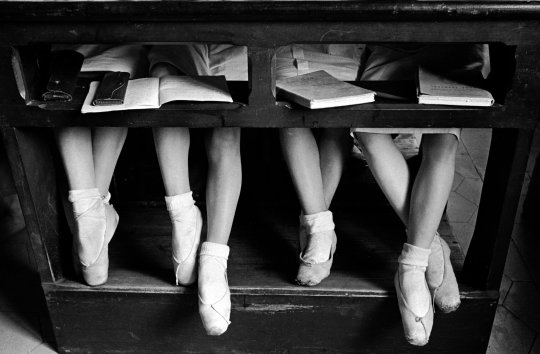
Close-up view of young ballerina's legs and toe shoes at La Scala Theatre Ballet School in Milan, Italy, 1934.
by Alfred Eisenstaedt
1 note
·
View note
Text
La Scala in città - Milan's opera house offers five days of free events
La Scala in città decentralises performances, scattering the orchestra, chorus, and ballet in various locations around Milan – and it is all free.
La Scala in città – corps de ballet at the Bagni Misteriosi, photo Brescia e Amisano, Teatro alla Scala
La Scala continues with its successful project to decentralise performances, scattering the orchestra, chorus, corps de ballet and its ballet school students in various locations around Milan – and it is all free.
Twenty-two performances in 18 locations make up La Scala in città, running from…
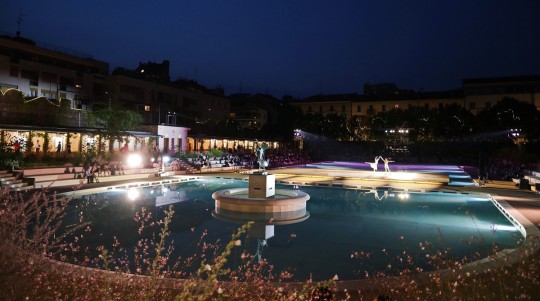
View On WordPress
#Frédéric Olivieri#George Gershwin#La Scala#Leonard Bernstein#Manuel Legris#Marius Petipa#Mauro Bigonzetti#Walter Madau
4 notes
·
View notes
Photo
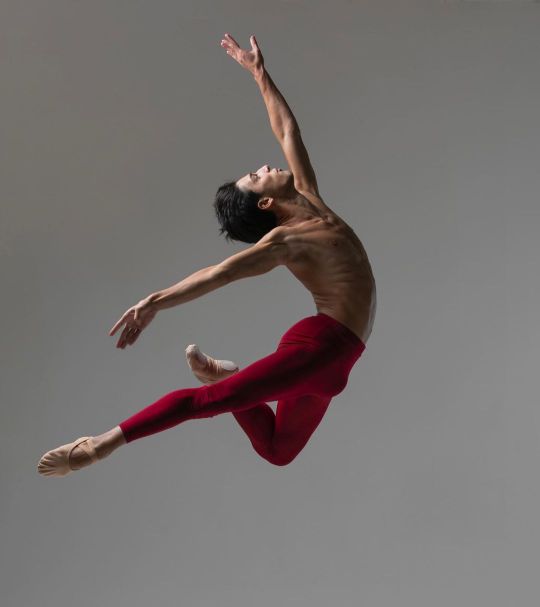
Alessio Cavalera | La Scala Ballet School | Photo by Federica Capo
24 notes
·
View notes
Photo
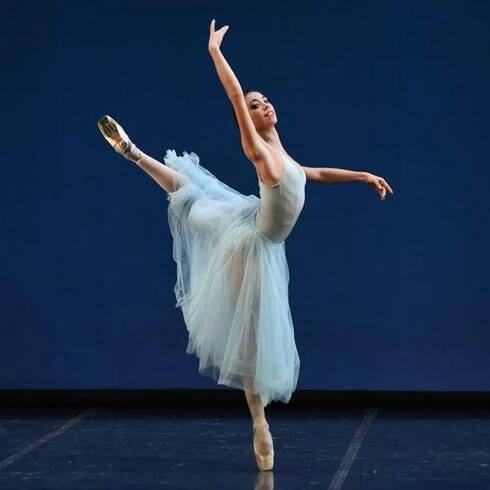
Current La Scala corps member Vanessa Vestita in Serenade (La Scala Theatre Ballet School, 2014)
135 notes
·
View notes
Text
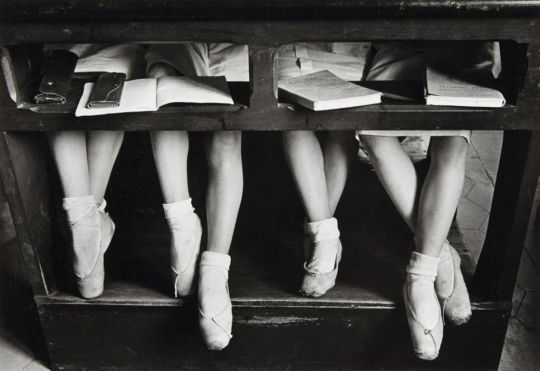
Lesson at La Scala’s Ballet School, Milan, Italy, 1934
Photo: Alfred Eisenstaedt
273 notes
·
View notes
Text
Article: The Paris Opéra's Diversity Report Proposes Steps Towards a More Inclusive Company
Date: February 9, 2021
By: Laura Cappelle
Five years after Benjamin Millepied was met with fierce resistance for bringing up racist practices within the Paris Opéra Ballet, the French company is finally acknowledging its lack of diversity. This week, the Paris Opéra released an official report with recommendations, commissioned in the wake of last summer's racial reckoning and increased support for the Black Lives Matter movement.
At the time, the worldwide push for social justice encouraged a group of Black and Asian employees, led by the Paris Opéra Ballet's five Black dancers [Isaac Lopes Gomes, Awa Joannais, Guillaume Diop, Letizia Galloni, and Jack Gasztowtt], to write a manifesto demanding change. Among the issues they raised were the continued use of the French n-word, a lack of tights and cosmetics for darker skin tones, and the absence of an effective anti-discrimination policy. The Paris Opéra's new general director, Alexander Neef, who arrived in September from the Canadian Opera Company, lost no time in offering support, and appointed the historian Pap Ndiaye and the civil servant Constance Rivière to lead an independent audit.
Their 66-page report, based on interviews with nearly 100 people both inside and outside the Paris Opéra, is at once measured and unequivocal. In the report, the Paris Opéra is described as "mostly a white world far removed from contemporary French society," with artists, management, board members and donors who remain overwhelmingly un-diverse. (No actual data is available, as racial statistics are strongly discouraged in France.)
Some of the report's 19 recommendations will strike observers outside France as common sense in 2021. Eliminating blackface, brownface and yellowface from the repertoire, or "opening choreographic commissions to diverse choreographers," are hardly radical moves at this point, and the Paris Opéra Ballet should arguably have committed to them a long time ago. Ndiaye and Rivière do insist on the need for more creations rooted in the classical technique, a longtime gripe of many POB aficionados, as the company tends to look to contemporary and hip-hop dancemakers to signal its openness.
POB also took action on some basic demands before the report was even released: A wider range of makeup and hair products was recently introduced (in the past Black dancers had to bring their own products), and in late January, for the first time, Black corps members wore tights that matched their skin tones during a livestream of the annual Défilé.
Other recommendations go much further. The suggestion that POB "reach out to high-level non-white artists in France and abroad to hire them into the corps de ballet," in order to "create role models," will likely be controversial within the company, as it has consistently refused to change its entrance competition system and allow for direct recruitment. Additionally, Ndiaye and Rivière focus much of their attention on the Paris Opéra Ballet School, described as "very homogeneous," with regards to its teaching staff and the very few minority children. They advocate for reform of the admittance process.
At present, the school essentially waits for students to come to it; instead, the report's authors say that it should be "more open to the outside world," step up outreach efforts, rethink its stringent physical criteria and organize auditions all around the country as well as in French overseas territories. A clash looks inevitable with the current school director, Élisabeth Platel. She has long insisted that the school is doing enough and isn't elitist because tuition is free, and recently defended the use of white face powder on Black dancers.
Platel isn't alone in France: The Paris Opéra's newfound interest in becoming an inclusive workplace has already sparked a political war of words. Renewed demands for antiracist action in the country since last summer have been derided by conservative thinkers as American-style divisiveness, and incompatible with France's universalist model, which hinges on a colorblind ideal. In December, the far-right politician Marine Le Pen seized on the Paris Opéra's efforts to accuse Neef of "antiracism gone crazy" and "obscurantism." (POB étoile Germain Louvet rightly pointed out that the Swan Lake video Le Pen tweeted wasn't even a company production. It actually starred the Bolshoi's Svetlana Zakharova and La Scala's Roberto Bolle in Milan.)
Even within the Paris Opéra, proactive, long-term support for this diversity drive is far from guaranteed. According to the newspaper Le Monde, less than 300 Paris Opéra employees, out of roughly 1,500, signed the manifesto last summer; some have even made their reluctance clear on social media.
Many of the recommendations—which include employee training, the appointment of a diversity officer, the creation of a committee of experts and greater contextualization of the repertoire for the audience—will also require significant financial investment, at the worst possible time. Despite a €61 million pandemic rescue package from the French state, the Paris Opéra anticipates additional losses of €29 million through the end of the 2022 fiscal year, as theaters are currently shut for the foreseeable future.
Millepied found out during his tenure just how slow POB can be to change. His successor as ballet director, Aurélie Dupont, expressed support, but Neef is clearly taking the lead and has remained steadfast in the face of criticism. Now the hard work begins: changing minds and ingrained habits, day by day, even as the news cycle moves on.
44 notes
·
View notes
Text
&. sofia carson : female : she/her : broken by lifehouse — It seems kaitlyn kennedy has been seen walking around Volterra. the 26-year-old gifted human has been in the city for 3 years working as a ballet dancer. doesn’t ballet shoes, long hair in a bun sometimes, smell of fresh coffee remind you of them? ⸢

BASIC INFORMATION
FULL NAME: kaitlyn kennedy
NICKNAME(S): katie, kate, lyn
PREFERRED NAME(S): katie
BIRTH DATE: april 12th, 1995
AGE: twenty tsix
ZODIAC: aries
GENDER: female
PRONOUNS: she/her
ROMANTIC ORIENTATION: heteromantic
SEXUAL ORIENTATION: heterosexual
NATIONALITY: american
ETHNICITY: Colombian – including Arab [Syrian-Lebanese, Palestinian], Spanish, possibly English, possibly other
CURRENT LOCATION: volterra, italy
OCCUPATION: ballet dancer
BACKGROUND
- a life well lived was what kaitlyn got. born to two sixteen year olds, kaitlyn was soon enough taken from her birth parents to be adopted. being taken in by a couple who were some what rich, she got the life she deserved.
- with her adoptive parents giving her love and affection growing up, she didn't have to worry about anything. when she turned seven, kaitlyn was enrolled into dance classes. it would be that first dance class that made her fall in love with dancing in general.
- with ballet classes every week, and to also school, she had a tight schedule. and same schedule continued when she entered high school too. though not as much. during her high school years, she wanted to have fun. and also participate in after school activities. that included cheerleading.
- aside from cheerleading, kaitlyn made sure to keep her grades up. studying as often as she could. come time for graduation, she graduated in the top ten of her class. when it came to college, with her position in Julliard secured, she packed her stuff up and headed for new york. for the first year, she lived in campus in the dorms.
- after that, she got her own apartment with the help of her parents. for the remainder of her years, coming to a total of four years, she focused on learning the different styles of dance. as well as putting on end of the year performances too.
- come her final year, she put all of her effort into the end of year performance. with having the lead role, she focused on her performance. it was also during that time though that she wanted to find her birth parents. after graduation, she started the search. waiting for a month, she finally got the information she needed.
-italy. they had moved to italy. packing her stuff up after explaining what she was doing to her adopted parents, she went to italy. finding them in volterra, she ended up staying for a bit to get to know them. though after a few months, she officially bought herself a studio apartment there.
- it was also around the time of meeting her birth parents that she discovered her ability, weather manipulation. after coming across a drunk man who was scaring her, it caused it to rain ice over the area. that alone freaked her out. but with the help of her birth mom, she learned to control it as well as hide it.
- two years after moving there, she opened her own dance studio, as well as join the la scala theatre ballet. did it take her out of volterra sometimes? yes. but she was willing to do it. it wasn't often though that she did go to milan.
- now a year later after that, she's doing her best to make her parents proud. both her adopted and birth parents.
OTHER FACTS
-aside from ballet, she does know other styles of dance. from contemporary to other various dance styles.
- she can eat an entire pizza by herself.
-kaitlyn was in love once. it was during her college years. but that all came crashing down after a car accident took the life of her now deceased boyfriend.
- she does know how to sing. but rarely sings in front of anyone.
WANTED CONNECTIONS:
- mate/love interest: katie has only been in love once. after that, she swore off love in turn of focusing on her career and dance studio. so this person would enter her life out of the blue and shake everything up for her.
- best friends: a small group of friends who she hangs out with from time to time. the ones who know her better than anyone else aside from her parents.
4 notes
·
View notes